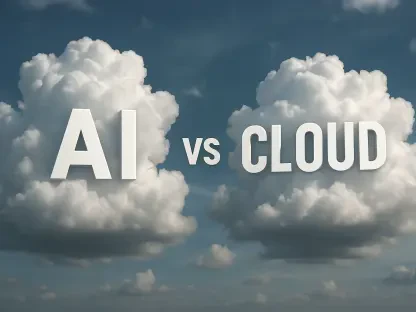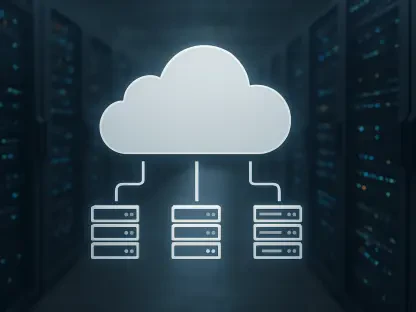In an era where environmental challenges demand swift and precise responses, the integration of NASA’s Harmonized Landsat and Sentinel-2 (HLS) data into Microsoft’s Planetary Computer on the Azure cloud platform marks a monumental stride in Earth observation. This collaboration between NASA and Microsoft is poised to transform how satellite imagery is accessed and applied by a diverse array of stakeholders, including researchers, developers, and policymakers. By merging data from NASA/USGS Landsat-8/9 satellites with the European Space Agency’s Sentinel-2A/B systems, the HLS initiative delivers a cohesive dataset that offers unparalleled detail and frequency in capturing Earth’s surface dynamics. Hosted on Azure, this resource is paired with state-of-the-art cloud computing and artificial intelligence capabilities, paving the way for groundbreaking advancements in environmental monitoring, disaster response, and sustainable land management. This development is not merely a technical achievement; it’s a catalyst for addressing some of the planet’s most pressing issues with data-driven precision.
Revolutionizing Satellite Imagery with Harmonization
The HLS project stands as a critical response to the long-standing demand for frequent, high-resolution satellite observations, a need underscored by the U.S. Federal Government’s Satellite Needs Working Group. By synthesizing the strengths of Landsat’s 30-meter resolution and 16-day revisit cycle with Sentinel-2’s finer 10-20-meter resolution and 5-day revisit, the harmonized dataset achieves a consistent 30-meter resolution with imagery updated every two to three days. Such granularity and frequency enable detailed monitoring at a field scale, making it possible to track rapid environmental shifts like vegetation stress, water resource changes, or the spread of insect infestations. This capability proves invaluable for sectors like agriculture, where timely data can influence crop management decisions, and for disaster response teams needing up-to-date visuals to assess damage and plan recovery efforts effectively.
Behind the scenes, a robust collaborative framework ensures the quality and availability of this data. The harmonization algorithm, crafted by the HLS Science Team, is managed by NASA’s Interagency Implementation and Advanced Concepts Team (IMPACT) at Marshall Space Flight Center. Distribution and archiving are handled by NASA’s Land Processes Distributed Active Archive Center (LP DAAC), in partnership with the USGS. This coordinated effort guarantees that the data remains high-quality, reliable, and freely accessible to users worldwide. By breaking down traditional barriers to accessing satellite information, this partnership fosters a global community of innovators and decision-makers equipped to tackle environmental challenges with actionable insights derived from cutting-edge imagery.
Unleashing Potential through Cloud Scalability
Microsoft’s Planetary Computer elevates the HLS data by integrating it into a vast, multi-petabyte catalog of environmental information, formatted for immediate analysis on the Azure platform. Users can access this data through intuitive application programming interfaces (APIs) and Azure storage solutions, bypassing the cumbersome process of downloading massive files. This streamlined approach significantly reduces the time and resources spent on data management, allowing scientists, developers, and analysts to concentrate on deriving meaningful conclusions and building applications. Whether it’s mapping land use changes or modeling climate impacts, the scalability of Azure’s cloud infrastructure ensures that even the most complex computations can be executed efficiently, supporting projects of varying scope and ambition across the globe.
Moreover, Azure’s ecosystem extends far beyond mere storage, offering a suite of powerful tools that amplify the utility of HLS data. High-performance computing, alongside advanced AI and machine learning services, empowers users to automate intricate tasks such as classifying land cover types, detecting urban expansion, or identifying deforestation patterns in near real-time. This technological synergy means that stakeholders from diverse fields—be it a university researcher studying ecological shifts or a tech startup developing geospatial solutions—can harness world-class resources to drive innovation. The platform’s design prioritizes accessibility, ensuring that barriers related to technical expertise or infrastructure limitations are minimized, thus enabling a broader range of users to contribute to environmental stewardship and policy development.
Transforming Insights with AI Integration
A particularly transformative aspect of the HLS data integration on Azure lies in the application of artificial intelligence to simplify and enhance Earth observation analysis. A pioneering example is the NASA Earth Copilot, a prototype AI assistant developed through a collaboration between NASA IMPACT and Microsoft. This tool allows users to interact with geospatial data using natural language queries, such as requesting information on the effects of a specific hurricane on coastal regions or tracking air quality changes during significant global events. By lowering the technical threshold for data interpretation, this innovation makes satellite imagery accessible to a wider audience, including educators, policymakers, and scientists who may lack specialized training in geospatial analysis, thereby fostering informed decision-making across various domains.
Equally important is the emphasis on democratizing access to these advanced resources. The HLS data on the Planetary Computer is available at no cost, although additional cloud services might incur fees, ensuring that financial constraints do not impede exploration of this vital information. Comprehensive training materials and tutorials provided by both NASA and Microsoft further support users in navigating the platform and maximizing its potential. This commitment to accessibility underscores a broader mission to empower individuals and organizations tackling global issues like climate change, urban planning, and disaster preparedness. By equipping diverse users with the tools to analyze and act on satellite data, this initiative paves the way for collaborative solutions to some of the most urgent environmental challenges facing the planet today.
Looking Ahead to a Data-Driven Future
Reflecting on the strides made, the integration of HLS data into Microsoft’s Planetary Computer proves to be a defining moment in the evolution of Earth monitoring. The frequent, high-resolution imagery provided by this harmonized dataset, coupled with Azure’s robust cloud and AI capabilities, addresses critical gaps in environmental observation, enabling precise tracking of land and resource changes. Tools like NASA Earth Copilot demonstrate how technology can simplify complex data analysis, broadening access for diverse users. Supported by seamless collaboration among NASA, USGS, and Microsoft, this effort sets a benchmark for how public-private partnerships can advance scientific progress. Moving forward, stakeholders are encouraged to explore the Planetary Computer’s free resources and training materials to leverage HLS data for innovative applications. This initiative lays a strong foundation for future advancements, inspiring continued investment in scalable, accessible technologies to safeguard and understand the planet’s intricate ecosystems.









